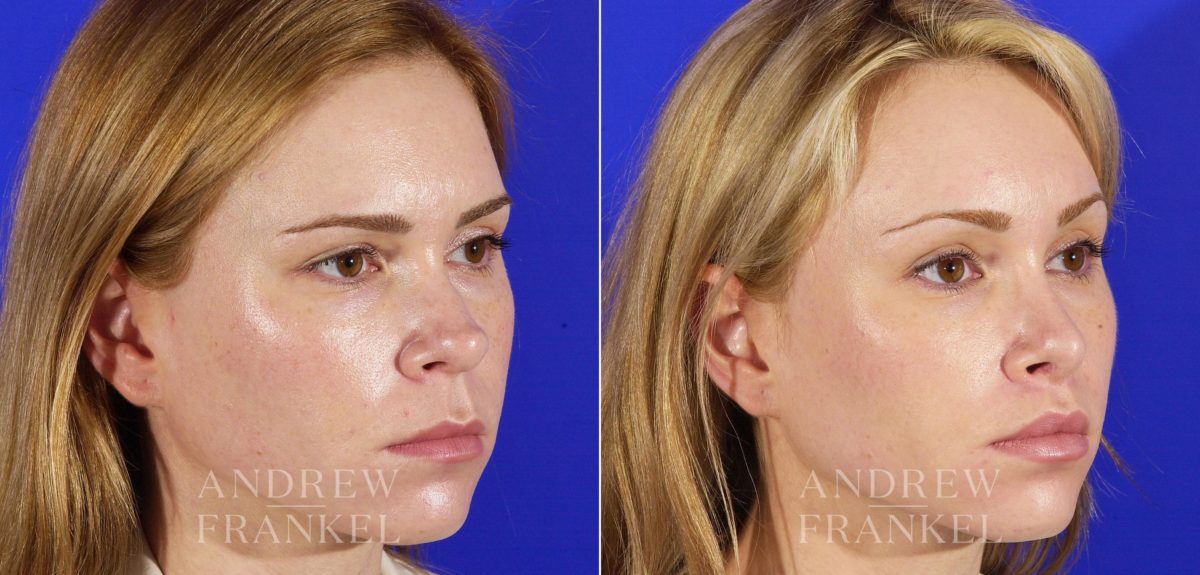
Comparing Different Brow Lift Techniques: PDO Threads vs. Endoscopic
Are you considering a Beverly Hills brow lift but overwhelmed by the options and techniques available? Choosing between PDO threads and traditional endoscopic brow lift procedures can be challenging without expert guidance. Dr. Andrew Frankel, a renowned specialist in facial plastic surgery, offers a deep dive into the nuances of these popular facial rejuvenation methods.
Dr. Frankel has extensive experience and proficiency in forehead lift techniques, providing a comprehensive perspective on their effectiveness, safety, and suitability. In this article, critical comparisons between the procedures and their expected outcomes will be discussed to help you make an informed decision for your aesthetic goals.
Mechanism of Action
PDO threads offer a non-surgical method for a brow lift. When inserted under the skin, these dissolvable threads support collagen production, leading to tighter skin and a more youthful appearance.
When placed in the subdermal layer of the forehead, the threads serve as support, allowing a subtle lift. The body then naturally surrounds the threads with new collagen, which helps to firm up the skin structure and elevate the eyebrows.
In comparison, endoscopic brow lift is more invasive, involving surgical techniques with small incisions typically hidden behind the hairline. This approach adjusts under the skin tissues to lift the eyebrows and reduce forehead lines.
Both these brow lift techniques intend to rejuvenate the facial area above the eyes, and the chosen method depends on the individual’s requirements.
Procedure Duration and Complexity
A PDO thread lift is an outpatient procedure completed in 45 to 60 minutes. Patients can return to their daily activities soon after this minimally invasive technique. The time it takes depends on the area’s size.
Endoscopic brow lifts take longer than PDO thread lifts, lasting about 1 to 2 hours. This surgical procedure involves small cuts within the hairline and using an endoscope. Though a more complex brow lift procedure, recovery is often quick with minimal scarring due to the endoscopic methods used.
Invasiveness and Recovery
Recovery Timeline after a PDO Thread Lift
A PDO thread lift is a less invasive option with minimal downtime. Patients usually resume normal activities within a week. The procedure involves inserting fine threads via small incisions, which helps the healing process. As the production of collagen ramps up, skin tightens:
- Day 1-3: Some swelling and discomfort, treated with over-the-counter medication.
- Day 4-7: Swelling decreases, and most people go back to their routines.
Post-Endoscopic Brow Lift Care
An endoscopic brow lift uses a surgical approach through minor incisions in the hairline, offering less scarring and a quicker recovery than direct brow lift surgeries. The recovery timeline after an endoscopic brow lift typically involves:
- Day 1-2: Resting with head up to reduce swelling.
- Day 3-10: Bruising and swelling subside, most feel ready to face the world in about a week.
- Week 2-4: A visit to remove stitches, with the majority of healing done.
- Week 4-6: Back to all activities, with the results becoming apparent.
Both treatments involve some downtime, but the meticulous incisions and gentler techniques meaning a shorter recovery time, letting patients enjoy a smooth forehead with little interruption to daily life.
BEFORE AND AFTER

*Each patient is unique and individual results may vary.
Longevity of Results
PDO thread lifts can temporarily give you a youthful appearance, generally lasting 6 months to 2 years. These threads support the skin and promote collagen stimulation, which helps maintain the look as they dissolve.
An endoscopic brow lift offers a more lasting result for a rejuvenated appearance, with benefits lasting around 10 to 12 years. Lifestyle and aging affect the duration of both types of brow lifts.
Both procedures aim to restore a youthful look, but the effects of an endoscopic brow lift surgery are typically longer than those from threads.
Potential Side Effects and Complications
PDO thread lifts
- Infection
- Swelling and bruising
- Pain at the thread entry points.
- Threads may show if not placed right or if they move.
- Rarely, a person may have an allergic reaction to the thread material.
It is important to choose a skilled provider and tell them about any allergies to medications.
Endoscopic brow lifts
- The minimally invasive surgery has different complications from traditional brow lifts and coronal brow lifts.
- Scarring is less but can happen
- Nerve damage can affect muscle movement or feeling, changes in brow position, changes in hairline, or bleeding under the skin.
- Issues with anesthesia and possibly needing more surgery.
It is vital to follow care instructions and take medications as directed after the procedure.
Traditional brow lifts and coronal brow lifts might lead to similar complications. Proper medications and aftercare are essential for healing and reducing the risks.
Aesthetic Outcomes
PDO threads are an innovative way to restore youthful skin and reduce the appearance of wrinkles. These threads, placed under the skin, trigger a natural healing process that results in a smoother, tighter complexion. The lifting effect is subtle, preserving the skin’s natural shape while meeting aesthetic goals.
Endoscopic brow lift Beverly Hills reshapes the brow and forehead, enhancing eye appearance. This advanced technique offers precision and subtly adjusts the forehead’s contour. Incisions are small and hidden, offering a desired brow shape without visible scarring.
Suitability for Different Patients
Ideal Candidates for PDO Thread Lift
Those with mild to moderate sagging can benefit from a PDO thread lift. It suits individuals with loose skin on their face, neck, or jawline, looking to improve their facial structure non-surgically. An ideal candidate has a clear goal—to look younger by lifting and tightening skin. Having an understanding of the capabilities of the procedure and a medical history without any complications that could affect healing are important factors to consider.
Suitable Patients for an Endoscopic Brow Lift
Suitable candidates show signs of aging like forehead lines or excess skin causing sagging eyebrows. The goal is a rejuvenated, alert look. Clear, attainable expectations and an absent history of facial paralysis make for good candidates. This decision should come from a thorough evaluation of facial features and medical history.
Revitalize with Dr. Frankel
Step into a world where beauty blends with science, and let Dr. Frankel guide you to a refreshed, youthful appearance.

Maintenance and Follow-up Treatments
Keeping PDO thread lift Results
To keep the benefits of PDO thread lifts, patients might need treatments again every so often. Threads dissolve over time, and additional treatments after six months to a year can keep the facial appearance fresh.
For those with temporal brow lifts, long-term care is key:
- Shield skin from the sun to slow aging
- Follow a skincare routine for elastic skin
- Consider other treatments to boost the lift’s results
- Visit the surgeon regularly to check the healing
Additional procedures may be needed to tweak changes in the face over time.
Maintaining Endoscopic Brow Lift Results
To maintain the results of an endoscopic brow lift, follow these key guidelines:
- Apply high-SPF sunscreen regularly to protect the face and forehead from sun damage.
- Maintain a balanced diet rich in antioxidants and vitamins to support skin health.
- Incorporate a daily skincare routine with gentle cleansing and moisturizing.
- Schedule regular follow-up appointments with your surgeon for monitoring.
- Practice stress-reduction techniques such as yoga or meditation.
- Ensure adequate hydration by drinking plenty of water throughout the day.
- Refrain from aggressive facial treatments that might affect the surgical results.
Following these guidelines can help sustain the refreshed appearance achieved through an endoscopic brow lift.

